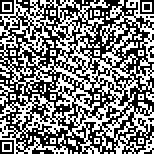| 摘要: |
| [摘要] 目的 探讨主要组织相容性复合体(MHC)-Ⅱ联合MHC-Ⅰ免疫组化染色在特发性炎性肌病(IIM)诊断中的应用价值。方法 收集2010年3月至2018年4月在首都医科大学宣武医院神经内科行肌肉活检患者的标本29份,并通过医院电子病历系统收集患者的临床资料,包括4种IIM[皮肌炎(DM)5例,多发性肌炎(PM)5例,散发性包涵体肌炎(IBM)4例及坏死性自身免疫性肌病(NAM)5例]和2种非炎性肌病(NIM)[肌营养不良(MD)5例,dysferlinopathy肌病5例]。将标本进行苏木精-伊红(HE)染色及MHC-Ⅰ、MHC-Ⅱ免疫组化染色。结果 免疫组化染色结果显示,PM、DM及IBM患者肌肉标本MHC-Ⅰ阳性率达100.0%,NAM和MD患者肌肉标本MHC-Ⅰ阳性率为80.0%,dysferlinopathy肌病患者肌肉标本MHC-Ⅰ阳性率为20.0%。PM和IBM患者肌肉标本MHC-Ⅱ阳性率分别为40.0%、50.0%,其余类型疾病患者肌肉标本的MHC-Ⅱ免疫组化染色均呈阴性。结论 相较于MHC-Ⅰ免疫组化染色,MHC-Ⅱ免疫组化染色在鉴别IIM与NIM中有较高的特异性。MHC-Ⅱ联合MHC-Ⅰ免疫组化染色对不同肌病类型的诊断有较好的临床应用价值。 |
| 关键词: 特发性炎性肌病 主要组织相容性复合体-Ⅱ 主要组织相容性复合体-Ⅰ 免疫组化染色 |
| DOI:10.3969/j.issn.1674-3806.2024.03.07 |
| 分类号:R 446.6 |
| 基金项目:国家自然科学项目(编号:82101470) |
|
| Exploration on the application value of MHC-Ⅱ combined with MHC-Ⅰ immunohistochemical staining in diagnosis of idiopathic inflammatory myopathy |
|
DUO Jianying, DI Li, LU Yan, WANG Min, HUANG Yue, ZHU Wenjia, WEN Xinmei, XU Min, CHEN Hai, DA Yuwei
|
|
Department of Neurology, Xuanwu Hospital Capital Medical University, Beijing 100053, China
|
| Abstract: |
| [Abstract] Objective To explore the application value of major histocompatibility complex(MHC)-Ⅱ combined with MHC-Ⅰ immunohistochemical staining in diagnosis of idiopathic inflammatory myopathy(IIM). Methods A total of 29 specimens were collected from the patients who received inmuscle biopsy in the Department of Neurology of Xuanwu Hospital Capital Medical University during March 2010 and April 2018, and the clinical data of the patients were collected through the hospital electronic medical record system, including 4 types of IIM[dermatomyositis(DM)(5 cases), polymyositis(PM)(5 cases), sporadic inclusion body myositis(IBM)(4 cases) and necrotizing antoimmune myopathy(NAM)(5 cases)] and 2 types of non-inflammatory myopathy(NIM)[muscular dystrophy(MD)(5 cases), dysferlinopathy myopathy(5 cases)]. Hematoxylin-eosin(HE) staining and MHC-Ⅰ and MHC-Ⅱ immunohistochemical staining were performed on the specimens. Results The results of immunohistochemical staining showed that the positive rate of MHC-Ⅰ in the muscle specimens of PM, DM and IBM patients was 100.0%, and the positive rate of MHC-Ⅰ in the muscle specimens of NAM and MD patients was 80.0%, and the positive rate of MHC-Ⅰ in the muscle specimens of dysferlinopathy myopathy patients was 20.0%. The positive rate of MHC-Ⅱ in the muscle specimens of PM and IBM patients was 40.0% and 50.0%, respectively. The immunohistochemical staining of MHC-Ⅱ in the muscle specimens of the patients with other types of diseases was negative. Conclusion MHC-Ⅱ staining has higher specificity than MHC-Ⅰ staining in distinguishing IIM from NIM, and MHC-Ⅱ combined with MHC-Ⅰ immunohistochemical staining has better clinical application value in the diagnosis of different types of myopathy. |
| Key words: Idiopathic inflammatory myopathy(IIM) Major histocompatibility complex-Ⅱ(MHC-Ⅱ) Major histocompatibility complex-Ⅰ(MHC-Ⅰ) Immunohistochemical staining |

